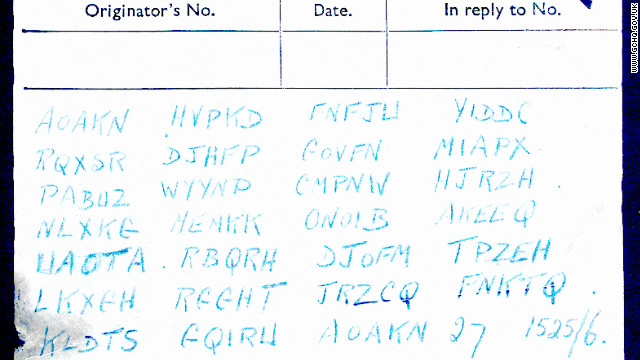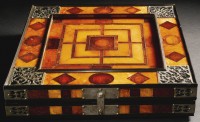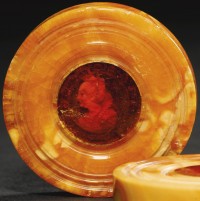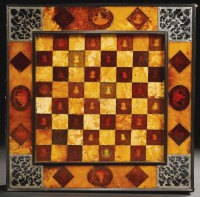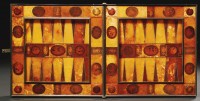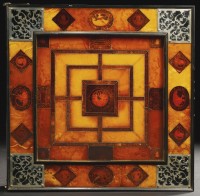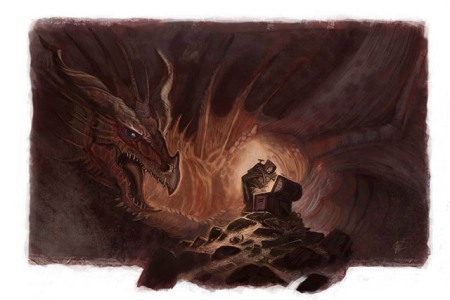400-Year-Old Playing Cards Reveal Royal Secret | Medieval News
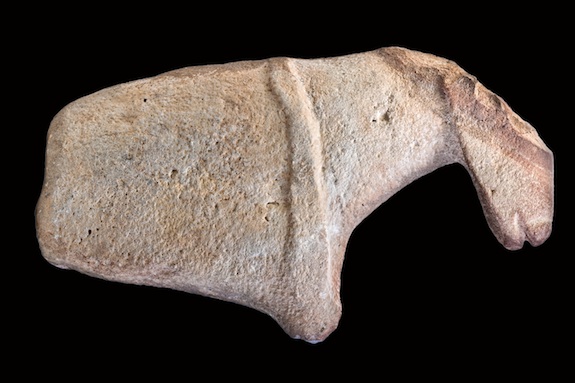
Representing part of a horse, this stone carving may prove that horses were actually first domesticated in the Arabian peninsula, not Central Asia. Circa 7000 B.C.E. Courtesy of the National Museum, Riyadh
“Today we hear that Arabia is a desert and petrol wealth. This is not true,” al-Ghabban says. Instead, he argues, it is a land with a deep and textured past, fundamentally intertwined with the cultures around it from the Greco-Romans to the Mesopotamians to the Persians. Dividing the region’s history into three epochs, the show moves from the area’s ancient trade routes at the heart of the incense trade to the rise of Islam and eventual establishment of the Saudi kingdom.
“We are not closed,” says al-Ghabban. “We were always open. We are open today.”
Many of the pieces in the show are being seen for the first time in North America, after the show toured Paris, Barcelona, St. Petersburg and Berlin. The Sackler has partnered with the Commission to organize a North American tour, tentatively beginning in Pittsburgh before moving to Houston’s Museum of Fine Arts and San Francisco’s Asian Art Museum.
Sackler director Julian Raby calls it one of the museum’s most ambitious undertakings to date.
The show comes after the Metropolitan Museum of Art held its own exhibit, “Byzantium and Islam: Age of Transition” in the spring. But rarely has a museum focused on the pre-Islamic roots of the region.
One of the show’s organizers in the United States, Sackler’s curator of Islamic art, Massumeh Farhad says, “It was practically all unfamiliar.” Though the items in the show, ranging from monumental sculptures excavated from temples to tombstones with some of the earliest known Arabic script, were discovered over the past several decades, many objects were just unearthed only in the past few years. “It’s new material that really sheds light on Arabia,” says Farhad, “which up to now everybody thought its history began with the coming of Islam, but suddenly you see there’s this huge chapter preceding that.”
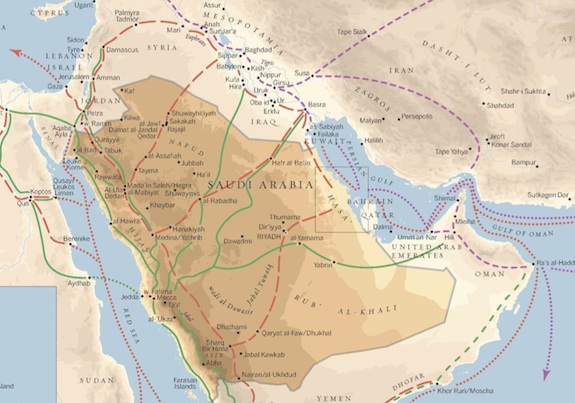
A detail from a map from the exhibit shows incense trade routes in red, Bronze Age commercial routes in purple and pilgrimage routes in green. Courtesy of the Sackler Gallery
As a result, the settlements, each with their own culture, grew wealthy and were able to both import goods and support a strong local artistic community, leaving behind a diverse material record. Enigmatic grave markers from Ha’il in the northwest, for example, share characteristics with those found in Yemen and Jordan. But, Farhad says, they’re distinct in dress and gesture. Some of the most stunning items in the show, the minimalistic rendering of human form speaks without translation to the sorrowful contemplation of death.
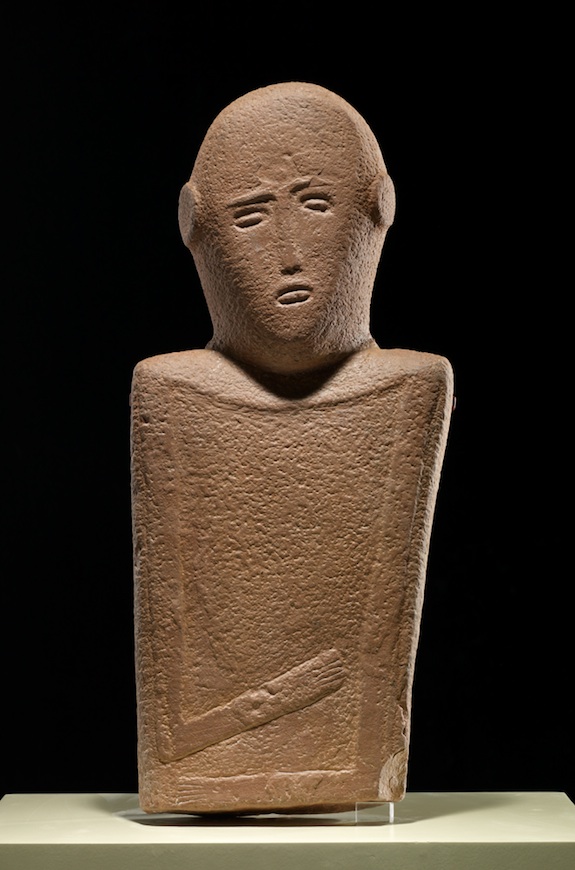
One of three stele in the exhibit, this sandstone grave marker from near Ha’il dates to the 4th millennium B.C.E. Courtesy of the National Museum, Riyadh
With the rise of Christianity, the luxurious expense of incense fell out of favor and over time the roads once traveled by traders were soon populated by pilgrims completing the Hajj to Mecca, where Muhammad famously smashed the idols at the Ka’ba. Because of Islam’s condemnation of idolatry, figural art was replaced by calligraphy and other abstracted forms. A room of tombstones that marked the graves of pilgrims who had completed the holy journey to Mecca represents some of the earliest known Arabic script. Lit dramatically, the rows of red and black stone mark a striking transition from the Roman bronzes from the 1st century C.E. just a few feet away.
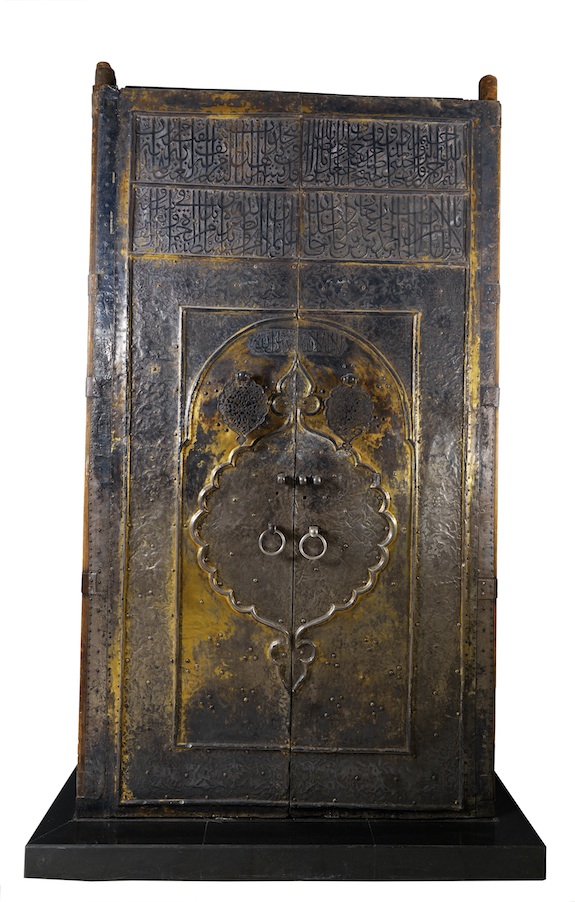
These doors, gilt silver on wood, marked the entrance to the interior of the Ka’ba until they were replaced in the mid-20th century. Courtesy of the National Museum, Riyadh
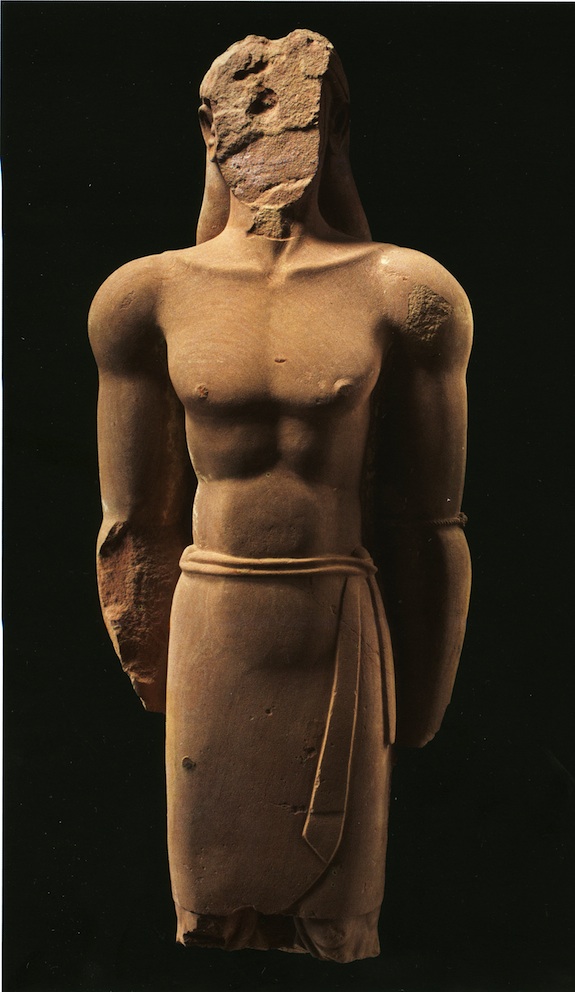
Excavators found colossal sandstone statues reminiscent of Egyptian sculpture in a temple in the ancient settlement of Dedan, now called Al-Ula. Circa 4th century B.C.E. Courtesy of the Department of Archaeology Museum, King Saud University
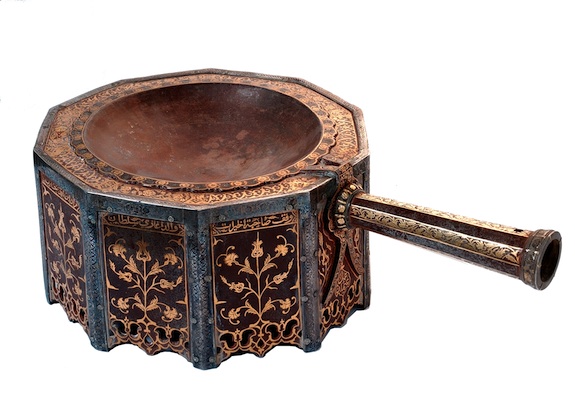
Donated as a sign of pious devotion on behalf of the Ottoman sultan’s wife, Mahpeyker or Kösem, this incense burner features iron, gold and silver in a floral inlaid pattern. AH 1059/1649 C.E. Courtesy of the National Museum, Riyadh
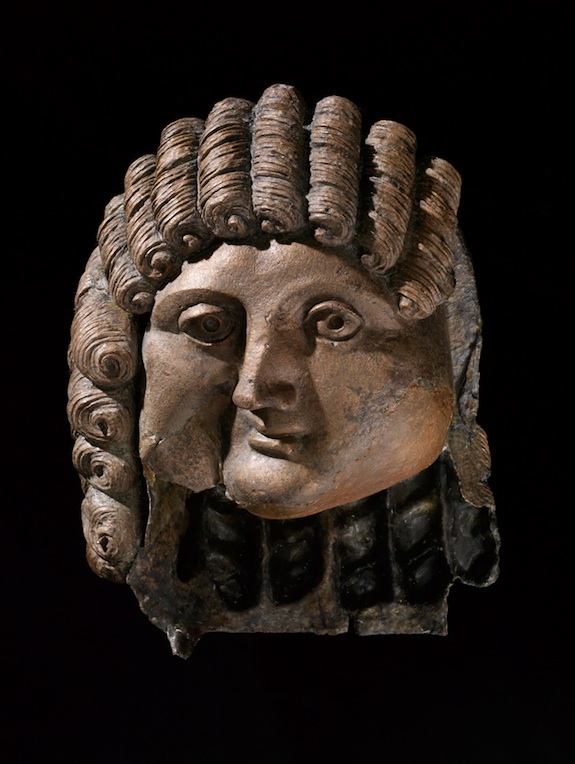
From the crossroads city of Qaryat al-Faw, this bronze head of a man reflects a strong Roman influence mixed with south Arabian stylizations, as in the treatment of the hair. Circa 1st to 2nd century C.E. Courtesy of the Department of Archaeology Museum, King Saud University





 Samples from the Seedling Growth investigation aboard the International Space Station help researchers study the impact of the microgravity environment on plant growth. (NASA)
Samples from the Seedling Growth investigation aboard the International Space Station help researchers study the impact of the microgravity environment on plant growth. (NASA)  View of the TROPI seedling cassette for the European Modular Cultivation System, or EMCS, aboard the International Space Station Destiny laboratory module during Expedition 14. (NASA)
View of the TROPI seedling cassette for the European Modular Cultivation System, or EMCS, aboard the International Space Station Destiny laboratory module during Expedition 14. (NASA) 
